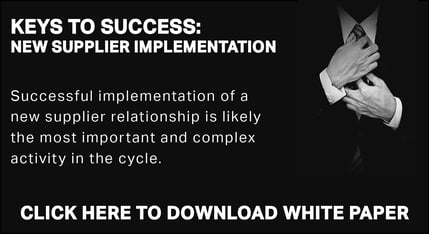After reading our previous articles on successful approaches to a Request for Proposal (RFP) and supplier negotiations, you are now ready to discuss how to successfully take the next step – implementing the new supply relationship that results from those processes.
In those previous articles we discussed the importance of including key stakeholders and users in the process to get their “buy-in” to the results. To the extent this was done, it jump starts the actual implementation which is often the most important and complex activity in the entire process and is critical to achieving the savings identified in the RFP and negotiations steps.
Driving the implementation
In order to effectively drive the implementation process, you need to ensure communication, planning and analytics are being utilized from beginning to end. Throughout the implementation process you'll need to communicate to executives overseeing the category. By communicating plans and processes, you'll facilitate a smooth supplier transition and ensure minimal disruption to the organization and locations impacted. You'll also want to utilize processes to measure the success of the change in terms of savings and value added and encourage conformance to the new supply relationship.
From Analysis to Action
During implementation there is a shift from analysis and decision making to action. It is important to form an implementation team that provides inclusion across all organizations involved including operations, purchasing, IT, HR and others that work closely with the supplier’s implementation team.
Some of the key activities in establishing the team include:
- Engaging the owner of the process. This could be in operations, IT, HR or other organizations depending on the category
- Assembling the team including suppliers, purchasing staff responsible for the category andkey stakeholders
- Familiarizing the team with the details of the new supplier relationship including savings anticipated, improved processes, supplier on-site management and value added activities like vendor managed inventory
Elements for a Comprehensive Implementation Plan
The next step to develop and execute a comprehensive implementation plan includes 5 crucial elements. To find out what those elements are, download our white paper, Keys to Success: New Supplier Implementation.
Click the image below for access to the Whitepaper




